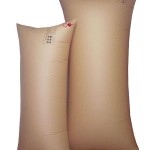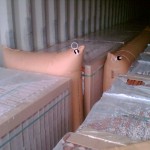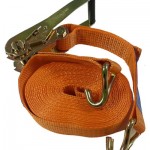

All you need to know about Dunnage Bags
Dunnage bags are air cushions used to fill the gaps between the cargo and extra space within the container or trailer to ensure cargo doesn’t move from its place. Dunnage bags provide appropriate and cost effective cargo stabilization within ISO Railcars, Trailers, Sea Containers, and cargo being transported through ocean going vessels. Dunnage bags increase road safety dramatically as it secures the cargo in place preventing the cargo from moving within the container or trailers. Dunnage bags are a very important load securing equipment and can prevent accidents as well as damage to cargo; 25% of accidents of transportations vehicles occur due to inadequate cargo securing.
Safe transportation of cargo is our first priority. Working alongside parties in the transport chain our main concerns are with the safe movement of containers between shipping lines, freight forwarders, ports and terminal operators. Fortris Load Secure offers guidance and best practices for those who are responsible for the correct packing and weighing of cargoes when they are placed into containers. These factors have a direct impact on the safety of ships and the reduction of the risks to lives of ship’s crews and other personnel in the transport chain.
Fortris Load Secure understands that when cargo is stowed into a container and free space is unavoidable, the cargo must be loaded in such a way that there is a gap in the middle. The gap must be filled with wood or lashed with rope or lashing. If the cargo is fragile, dunnage bags must be used.
As a UK Manufacturer of Dunnage Bags we are able to supply both Paper and Woven dunnage bags to our customers.
Paper Dunnage bags are made from two layers of skin, the outside skin is made from semi-extensible and form-stable kraft paper of high tensile strength. The inner skin, called inliner, is manufactured from coextruded polyethylene (PE) and holds the air within the bag. The inner component provides optimum pressure and the outer component provides optimum strength.
Woven dunnage bags with an outer skin from robust and environmentally-resistant polypropylene are best suited for heavy load and unfavourable climatic conditions. Our woven dunnage bags are available in standard sizes (60 x 90 cm to 120 x 225 cm) and two versions with differing strengths of the outer skin as well as with two different valves. Our especially designed ultra-flat valve facilitates the use of our bags in tight gaps and those which are difficult to access, while our standard valve ideally serves most conditions.

